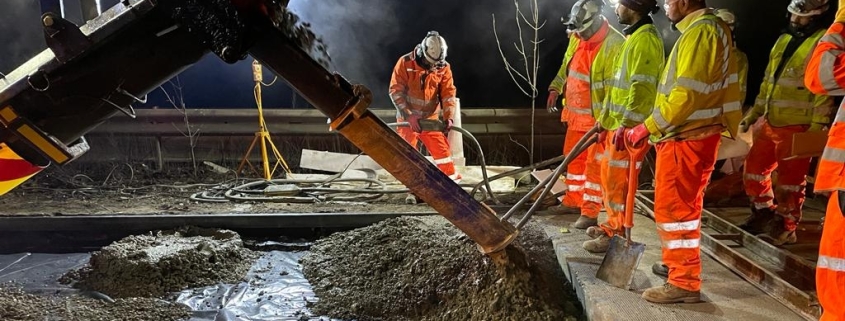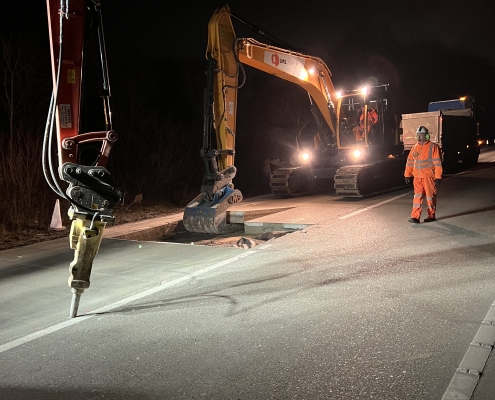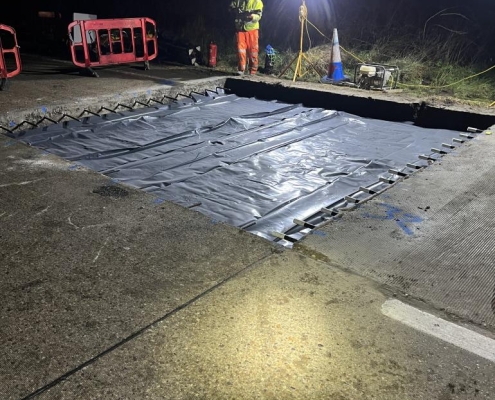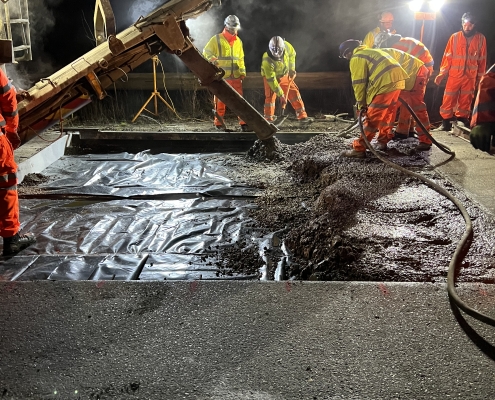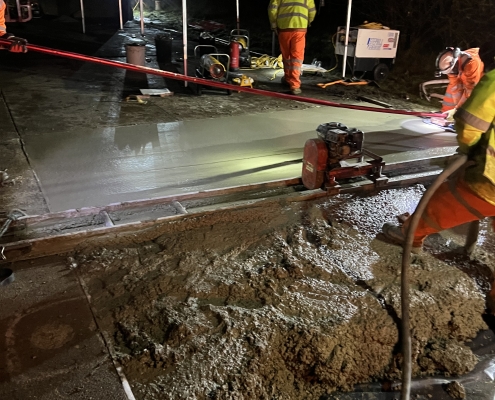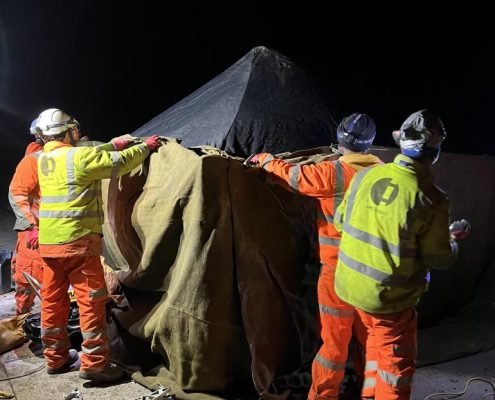LMS Highways deliver concrete bay replacements and various other repairs to the A11
The A11 is a concrete road designed between the 1950s and 1970s had an average life span of 50 years. The surface is now reaching the stage where it needs to be repaired or replaced for safety reasons. This reconstruction scheme was split into phases beginning in 2021 as part of National Highways nationwide drive to revitalise roads with concrete road surfaces across the country.
In late 2021 LMS Highways began working on the A11 to repair and replace the surface between Spooner Row and Thickthorn Interchange and in early 2023 we were requested back to deliver concrete bay replacements and various crack and joint repairs to Hethersett bypass between Wymondham and Cringleford on both the North and Southbound Carriageway. This phase was predicted to take around 5 weeks to complete.
Shifts to complete the project
Concrete Installed
Trees planted to offset Co2 produced
Work began by marking out the areas of repair ready for the bays to be diamond saw cut and extracted. The damaged concrete bays were broken out and remove using a combination of a pecker and lifting bucket and a vacuum lifting plate, both of which are capable of lifting and removing large continuous sections of concrete without needing to break them down into smaller pieces.
Bays are then prepped with a polythene waterproofing membrane and steel dowels, the dowes are drilled into place using our EZ-Drill AKA slab riding rig to along both the transverse and longitudinal edges. Dowel bars are short steel bars that are installed into the surrounding concrete slabs to provide a mechanical connection that doesn’t restrict joint movement and are designed to increase load transfer efficiency which is vital to long performance.
The new concrete bays are then recast using a fast curing concrete, this rapid set mix along with conventional heating methods of tents and space heaters insures the concrete hardens to a trafficable state within as little as 4 hours as opposed to other traditional concrete mixes which can have a hardening time taking between 7 and 28 days. Therefore making this service incredibly desirable for clients who are looking for minimal road closure time and little to no disruption to daily commuting. With the correct maintenance our can expected service life of around 30-50 years.
Additional repairs were made to the surface cracking by performing thin bond repairs. This is a repair designed to fix thin surface cracking due to pavement movement, repairing broken slab corners and to reform levels between slabs. Thin Bond Repairs are installed by firstly planing out the crack and surrounding area to the diameter of 200mm wide by 50mm deep. This is then primed and infilled using Maxi Crete, which is a BBA approved, resin based, flexible repair material. This is a preventative service which prolongs the life of cracked surface before a larger patch repair or bay replacement is necessary.
Preventative repairs like these are commonly used in large projects where possible, to keep the overall cost down as they help repair and extend the life of an existing carriageway before it reaches a stage of disrepair where then a full bay replacement would be necessary.

